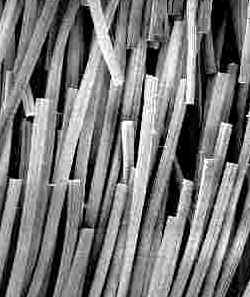Accelerator Astrophysics

Many of the atomic nuclei in the Universe were created in binary star systems that produce recurrent explosions called novae. To fully understand the sequences of nuclear reactions that take place in novae and other explosive events in the Cosmos, researchers need beams of unstable (radioactive) nuclei, which are harder to make than the usual stable beams used in accelerators. The first US facility to accelerate high quality radioactive beams–and only the second such facility in the world–reports its first data in the 5 July PRL. The team measured properties of a nuclear state that is essential to understanding novae and other astrophysical events but has been inaccessible to past experiments.
After many decades of work on stable nuclei, nuclear physicists have gotten increasingly interested in the structure of unstable ones. But making a high quality beam of radioactive nuclei that decay in a matter of seconds is tricky. In the past researchers have created the nuclei through nuclear reactions in the target of a stable beam, but now several labs are adding a second stage of acceleration for the radioactive products of those reactions. Such a facility, which makes a higher quality beam, was recently built in Belgium, and the first US example, the Holifield Radioactive Ion Beams Facility (HRIBF), is now running at the Oak Ridge National Laboratory in Tennessee. With these and several other facilities now in planning or construction phases around the world, researchers will study astrophysics, nuclear structure, materials science, and even medical applications of radioactive nuclei.
The first published data from the Oak Ridge facility concern the fate of the unstable nucleus. According to theoretical models of novae and other cosmic explosions, the transformation into is a crucial step in the nuclear reactions, affecting observable properties, such as the x-ray spectrum astronomers should see. But using only stable nuclear beams, researchers have been unable to detect one of the initial states, leaving a large uncertainty in the models. “This state has been looked for for over ten years and never been conclusively seen,” says team member Daniel Bardayan.
The HRIBF technical staff spent two years trying to produce a good beam. This nucleus has a half-life of 64 seconds, and one of the problems was getting the highly reactive and unstable atoms from the first target to the second accelerator, according to Bardayan. In the first accelerator they used a deuteron beam with a fibrous target surrounded by vapor. This set-up allowed molecules to diffuse to the next stage, where the nuclei were extracted and accelerated. This radioactive beam bombarded a polypropylene target from which the nuclei briefly captured protons to form the short-lived state. By varying the beam energy and measuring the protons scattered from the target, the experimental team, led by Michael Smith of Oak Ridge, determined the energy and lifetime of the state. That will allow precise calculations of the production rate in novae–a parameter for which previous estimates have varied by a factor of 100.
“It’s quite an achievement,” says John D’Auria of Simon Fraser University in Burnaby, Canada. He says it’s “extremely important” that Oak Ridge has created beam. Walter Henning of Argonne National Laboratory in Illinois agrees and points out that his institution has also recently created a beam using a single-accelerator technique that is suitable for different experiments [1]. D’Auria adds that unaccelerated radioactive beams have been in use for many years, but with so many new style radioactive beam facilities now being discussed and built, he sees a new era of nuclear physics: “The whole field has been revitalized.”
References
- B. Harss et al.Phys. Rev. Lett. 82, 3964 (1999)


